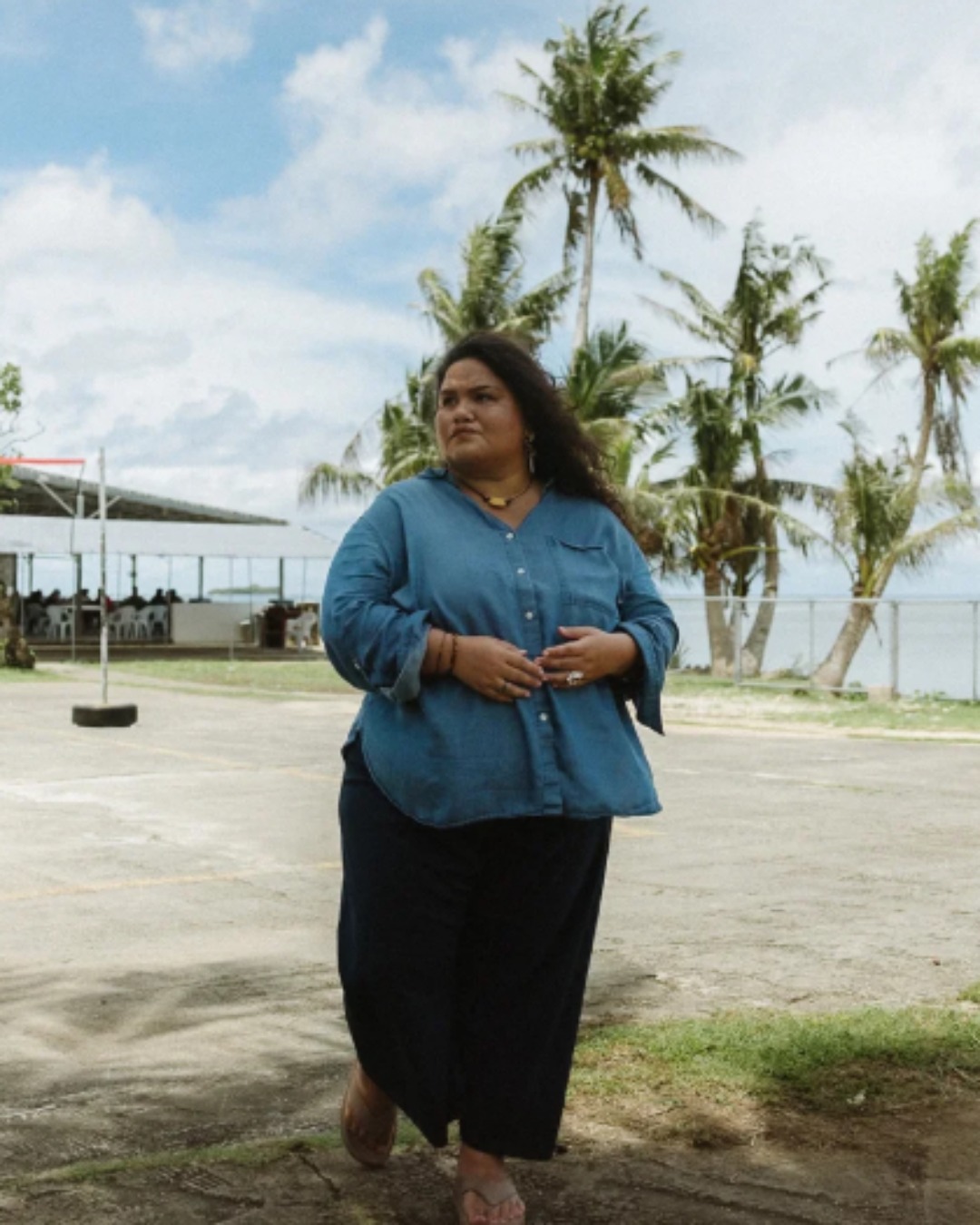In the vast expanse of the Pacific Ocean, where the United States has long projected its military power across countless islands, a quiet but determined resistance movement grows. At its heart stands Siobhon Rumurang, an Indigenous Chamoru-Palauan writer whose life story illuminates the profound costs of militarization on Pacific communities and the enduring power of storytelling as a form of resistance.

Born and raised in Guåhan—known to most Americans simply as Guam—Rumurang grew up witnessing the complex realities of life in an unincorporated U.S. territory. Her childhood was rich with the textures of Pacific island life: humid air thick with family voices, backyard gatherings that stretched late into tropical nights, and the wisdom of her grandmother who taught her to tend taro, sugarcane, and banana in their family garden. Yet beneath this cultural abundance lay the stark reality of military occupation, a presence so pervasive it shaped every aspect of community life.

The seeds of Rumurang’s advocacy were planted early, nurtured by parents who demonstrated love for their community through action despite limited financial resources. As teachers and ministers, they volunteered at prison rehabilitation programs, established affordable adult education, and worked in suicide prevention—showing their youngest daughter that caring for one’s people requires both vision and sacrifice. This foundation of service would prove crucial as Rumurang later developed her own critical understanding of justice and liberation.

College became a watershed moment, as postcolonial literature courses and Pacific histories revealed the broader context of U.S. militarization in her homeland. The personal became political when her brother enlisted in the army, forcing difficult conversations about complicity and resistance within families living under occupation. Reading “Microchild,” a poetry collection by her great-uncle reflecting on Palau’s violent struggle for independence, Rumurang began connecting her island’s experiences with global movements for justice—from Black Lives Matter to Standing Rock, recognizing common threads of resistance against state violence.

Returning home after college, Rumurang confronted the overwhelming reality of military expansion plans that threatened to transform Guåhan’s landscape and communities. Mass deforestation, contamination of water sources, the conversion of sacred sites into firing ranges, and the relocation of thousands of marines to an already densely populated island represented not just environmental destruction but cultural annihilation. The cruel irony was inescapable: poverty-stricken islanders were being recruited to serve in a military apparatus that simultaneously destroyed their homeland while they remained powerless to vote on policies affecting their own territory.

This realization drove Rumurang to join Nihi Indigenous Media, a production house founded in 2013 to support community storytelling and cultural preservation throughout Micronesia. Through documentary work, animated biographies, and Indigenous language immersion projects, Nihi creates spaces for Pacific islanders to tell their own stories, reclaim their narratives, and imagine liberated futures. For Rumurang, writing became what she calls “a second homeland”—a space for reflection, resistance, and hope in occupied territory.
Her work exemplifies the power of Indigenous media to challenge dominant narratives. The animated series “Heroes of Micronesia” celebrates influential elders and leaders who defended their homelands against militarization, colonialism, and climate change. Screening across Pacific islands and in classrooms globally, these stories reach audiences hearing their own histories of resistance for the first time. The series serves as both education and inspiration, reminding viewers that they “come from greatness, from the beauty and strength of old lands and courageous people.”
Currently, Nihi is documenting the historic case where Pacific island leaders took climate change to the International Court of Justice, securing a landmark advisory opinion that transforms possibilities for frontline communities worldwide. This project embodies Rumurang’s approach to storytelling—moving between roles of historian, witness, and futurist to offer Indigenous peoples “a place of reckoning” where they can “exhume what’s been erased, grieve what can’t return, and imagine where we will continue beyond futility.”
The challenges facing Pacific activists are immense. In one of the world’s most militarized regions, where one in eight Chamorus serves in the military, speaking against militarization carries real risks—lost job opportunities, denied funding, family shame. When military presence is so deeply woven into daily life and economic survival, organizing for demilitarization requires navigating complex loyalties and dependencies that colonialism has deliberately created.
Yet Rumurang’s work demonstrates that resistance takes many forms. Through transnational networks like those supported by the Urgent Action Fund, Pacific activists connect with global movements, sharing strategies and building solidarity across vast distances. These connections combat the isolation that makes advocacy “long and lonely work” while providing crucial resources and support for communities on the frontlines of multiple crises.
Perhaps most importantly, Rumurang’s story challenges narratives of inevitability and despair that often surround discussions of militarization and climate change. She insists on rejecting what she calls the “cowardice” of claiming we lack language for global violence or pathways through political instability. Drawing strength from her connections to grassroots movements worldwide, she maintains that “there’s always more to lose” but also that “what’s still left is not nothing.”
In Rumurang’s vision, resistance continues in countless forms: “Someone stays, someone moves money to the frontlines, someone hides, someone else hides them, someone claims the land back, someone trades secrets of escape or infiltration. Somewhere, new forms of life form.” This understanding of resistance as multifaceted and ongoing offers hope while demanding continued commitment to justice and liberation for all colonized peoples.
